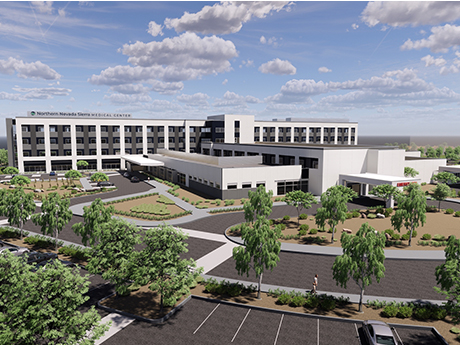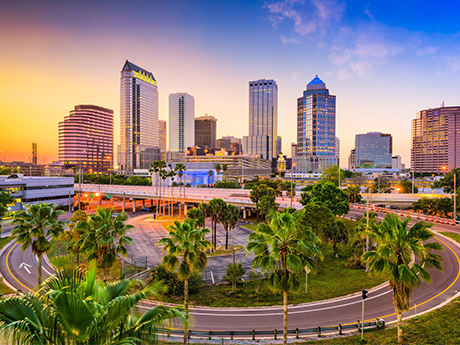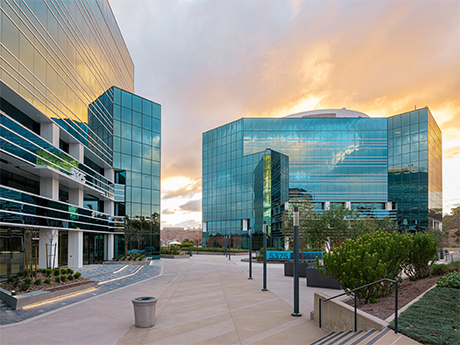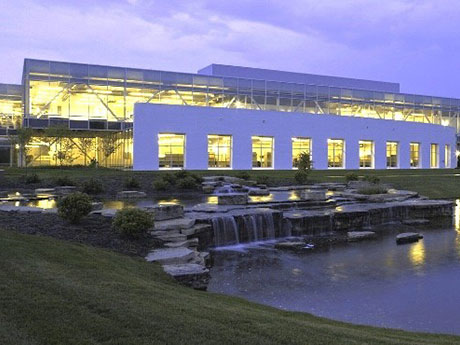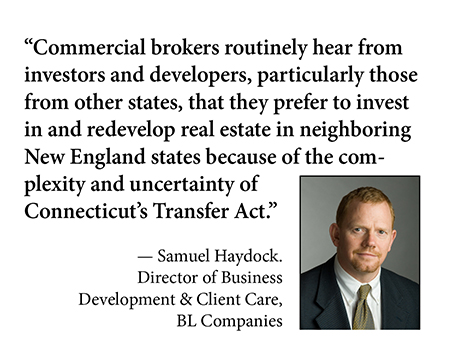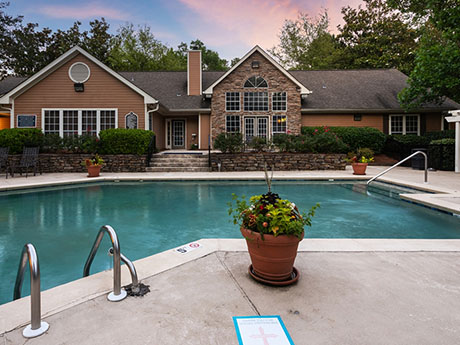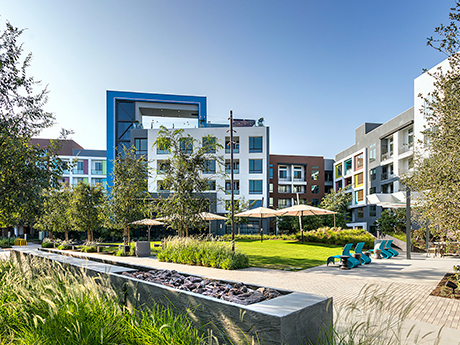Unprecedented development is underway across the Baltimore metro area with more than $6.6 billion of infrastructure and major development projects in the pipeline, and office-using employment remains strong. More than 574,000 people are employed in a diverse set of employment sectors that require offices, including professional and business services, government, financial services and tech and information. The past year, unemployment fell in each Maryland submarket, with Baltimore dropping 140 basis points, which is similar to the national unemployment rate that decreased 150 basis points. In the second half of last year, several public sector agencies relocated into the Central Business District (CBD) from Midtown and Mount Vernon locations, pushing net absorption positive and vacancy negative. This helped state and local government tenants lead all sectors in leasing activity in the fourth quarter of 2022, accounting for 56 percent of all leases signed. The Maryland Department of Health signed the largest lease of the quarter with its new 463,000-square-foot lease at 300 N. Greene St. Other State of Maryland relocations include Department of Labor, Office of the Comptroller, Department of Budget & Management, Department of Planning and Department of Aging. Combined, these state government tenants leased 761,000 square feet in the …
Market Reports
— By Melissa Molyneaux, Executive Vice President, Colliers — The Northern Nevada market has seen continued positive net absorption, slowed investment sales and a sizeable increase in available sublease space in recent months. Local tenants with smaller footprints have been the driving force behind leasing activity and the market’s positive net absorption, with most new leases signed in 2022 being 5,000 square feet and less. Meanwhile, national and corporate tenants reevaluating their space needs have brought much of the available sublease space to the market in significantly larger blocks. Uncertainty surrounding interest rates has slowed investment sales, although pricing remains healthy. With investors putting a pause on new acquisitions, owner-user purchase activity may increase as tenants seize new occupancy opportunities. New construction starts have been minimal, although redevelopment/renovation projects remain prevalent. Two new developments that have broken ground include the Kimpton, a premier Class A high rise in downtown Reno, and Renown South Meadows, a specialty care center with about 40,000 square feet available for third-party providers. Each development represents continued demand from client-facing occupiers and healthcare providers in the region. In 2022, there were 30 companies that either expanded in or relocated to Northern Nevada, according to the Economic Development Authority of Western …
By Holly Jones and Trey MacKnight, Cushman & Wakefield/The Lund Co. The world of retail real estate in the Midwest has been rapidly evolving over the past few years, with the pandemic serving as a catalyst for more change. As we move further into 2023, it’s becoming increasingly clear that the retail landscape is different than in years past, yet healthy in numbers. In this article, we’ll explore and explain some of the latest trends, developments, absorption and vacancy, and how this is impacting the industry as a whole. Whether you’re a retailer, landlord or investor, it’s essential to stay up to date with the current market and future developments. Omaha’s retail market recorded 350,931 square feet of positive absorption in the fourth quarter, bringing the year-to-date absorption total to 1 million square feet. Throughout 2022, there were 34 buildings delivered, increasing the retail inventory by 379,733 square feet. At the close of the year, more than 86 percent of the new construction was occupied, creating a very healthy environment. While there were sizable deals inked throughout the year, just over 85 percent of the new leases signed were under 5,000 square feet. Many of the leases were signed by …
By Taylor Williams “Numbers never lie; they simply tell different stories depending on the math of the tellers.” Mexican-American poet Luis Alberto Urrea may not have been talking about commercial real estate development and investment when he wrote that line, but the implications of that statement are undeniably applicable to those fields. The use of numerical projections in commercial development and investment is different from employing sabermetrics in sports or using predictive analytics to diagnose illnesses in medicine. Hard costs are what they are, and the formulas that developers and investors rely on to make critical decisions tend to be well-established in their rigidity, even if their inputs can and do change. Respecting the time-tested veracity of these formulas can make the difference between coasting through a down cycle or being crushed by it. Yet this is a world in which complex equations, algorithms and computations increasingly influence key business decisions. And so the ability to accurately forecast, control and manipulate numerical inputs is beyond valuable. Underwriting represents the piece of the real estate development or acquisition process in which these numerical details are shoved under the microscope and relentlessly finagled in hopes of keeping a development or deal alive. …
Once bypassed by national developers and investors for larger, metropolitan cities like Miami, the real estate community is now realizing what locals have known for years: Tampa is trending. Tampa Bay’s recognition as one of the country’s top places to live has trickled into the region’s office market, which as of the first quarter of the year, has continued to reap the benefits. While some credit the Tom Brady effect to Tampa’s rise into the national spotlight, the Tampa Bay region is seeing growing demand in other economic sectors beyond sports, including housing, business and leisure. In fact, Time Magazine just featured Tampa as one of only four U.S. cities in its highly coveted 2023 list of the “World’s Greatest Places.” Flurry of activity to start 2023 For the first time in five quarters, the Tampa Bay office market recorded positive absorption of more than 55,000 square feet thanks to more companies moving into space rather than vacating it, JLL’s first-quarter Office Insight Report for 2023 shows. This can be largely attributed to Reliaquest’s move into its 140,000-square-foot headquarters located at Thousand & One Water Street, where it is currently occupying 120,000 square feet, and which made up the lion’s …
— By Tim Helgeson, Senior Vice President, Asset Manager, KBS — With San Diego’s median age sitting at just 34.9 and only 12 percent of the population over 64, much of the area’s workforce comprises younger Millennials and Gen Z professionals. This new generation of workers has a fresh approach to employment, not to mention a unique shared history that’s shaped by COVID. As this younger cohort enters and establishes itself in the workforce, employers expect their office space to help them attract and retain young talent. This expectation is influencing investors’ decisions and, in many ways, reshaping the office market in the new normal. These younger workers will be impacting office market dynamics now and for the next several years in a few different ways: Accelerated Repopulation of Offices Many employees got used to working remotely during the pandemic, but there is ample evidence that companies recognize the importance of having their teams in the office. Younger workers are partially driving this trend. In fact, research shows that Gen Z values the office more now than they did before the pandemic. The truth is, no remote work situation can compare to face-to-face, on-site interactions for onboarding, teaching, mentoring and advancing …
By Aaron Duncan, CBRE Describing Central Ohio’s current office market conditions is like a kid making the “little bit of everything” drink at the self-serve soda fountain: a lot of ingredients go in and the result is, surprisingly, okay. The office market is filled with polarizing headlines — from the growth and success of suburban Class A+ product versus newly vacated assets, to sublease space swarming the stat line, and everything in between. Moreover, the sector continues to provide pools of negative and positive market conditions. One’s perspective on the market largely depends on which way they’re standing in that month but overall, much like that childhood concoction, it’s okay. The good and the bad For nearly three years, tenants leaned on ownership groups to let them put temporary solutions in place while they fully vetted their return-to-work strategies. Today, the good news is that tenants have finally figured it out and are confident about what their current and future footprints will look like. A strong indicator of this is the volume of headquarters transactions in the market, five of which were completed by our team: • Vertiv: 75,000-square-foot, suburban headquarters lease at 505 N. Cleveland Ave. • Surge Staffing: …
By Samuel Haydock, business development and client care – environmental services, BL Companies. Connecticut’s industrial past and subsequent decline has left the state dotted by abandoned factories and associated pollution — contaminated soil, groundwater, abandoned buildings and neighborhood blight. The impact can be seen across the state, from urban centers like Waterbury and Bridgeport that have block after block of brownfields to rural communities such as Plainfield and New Milford, where the town was developed around mills or factories that now sit vacant and dilapidated. While Connecticut has led the way in recent years with significant funding for assessment and remediation of brownfields to jumpstart redevelopment, the state still suffers from a reputation as having environmental regulations that thwart investment and growth. How We Got Here The main culprit is an environmental statute known as the Connecticut Transfer Act. Passed in 1985 as a “buyer beware” law to disclose the presence of pollution and protect buyers from unwittingly purchasing cleanup liability, the law has — whether fairly or unfairly — been blamed for the creation of brownfields and the lack of investment needed to revitalize them. Ask any commercial real estate broker about the Transfer Act, and he or she …
When we wrote about the Birmingham multifamily market last year, the main trends were job growth and in-migration to not only the Birmingham market, but the Sun Belt as a whole. The growth was described as “unprecedented,” which it certainly was, and investor optimism could not have been higher as cap rates plummeted and property performance continued to thrive. Since then, the 10-year Treasury yield has risen nearly 200 basis points, inflation experienced nearly 6.5 percent growth last year and there was a more cautious optimism going into the fourth quarter of 2022. But what if we are not hitting a stopping point, rather moving back into a cycle of normalcy? Amongst the many major indicators for 2023, the common theme appears to be uncertainty. Many notable factors such as debt and rising insurance costs have been a sounding board for this skepticism in the market. 2021 and 2022 proved to be nothing short of record-breaking in the multifamily sector. For Birmingham, our outlook is that the solid foundation it has built over the past few years, and the post-pandemic recovery boom it experienced, will show that the city is still poised for growth and has been fortunate to not …
— By Cameron Irons, Executive Director, SVN Vanguard — The multifamily real estate market in Orange County continues to be one of the most attractive and profitable in the country. The area’s strong economy, affluent population and abundance of job opportunities have made it a popular destination for people looking for a place to live. As a result, the demand for housing in Orange County has remained high. Developers are responding by building new multifamily and mixed-use developments. There are several highly active companies developing new multifamily projects in Orange County. Projects such as Metropolis by the Irvine Company and Park and Paseo by Broadstone are nestled among large office/industrial parks and feature thousands of residential units, in addition to retail and commercial space. They are designed to be hubs for work, play and living, offering residents a wide range of amenities. Lennar Homes, KB Homes and Meritage Homes have similar projects in development in every city throughout the county. Despite the high prices of these properties, the Orange County multifamily market continues to thrive. The area has seen a surge in the number of renters in recent years, which has put pressure on the available housing supply. This has driven …



